Pandalus platyceros
North Coast (Oregon Border to Point Arena)
North Central Coast (South of Point Arena to Half Moon Bay)
Central Coast (South of Half Moon Bay to Point Conception)
Santa Barbara (Point Conception to Point Dume)
South Coast (Point Dume to Mexico border)
Shellfish
Wild caught
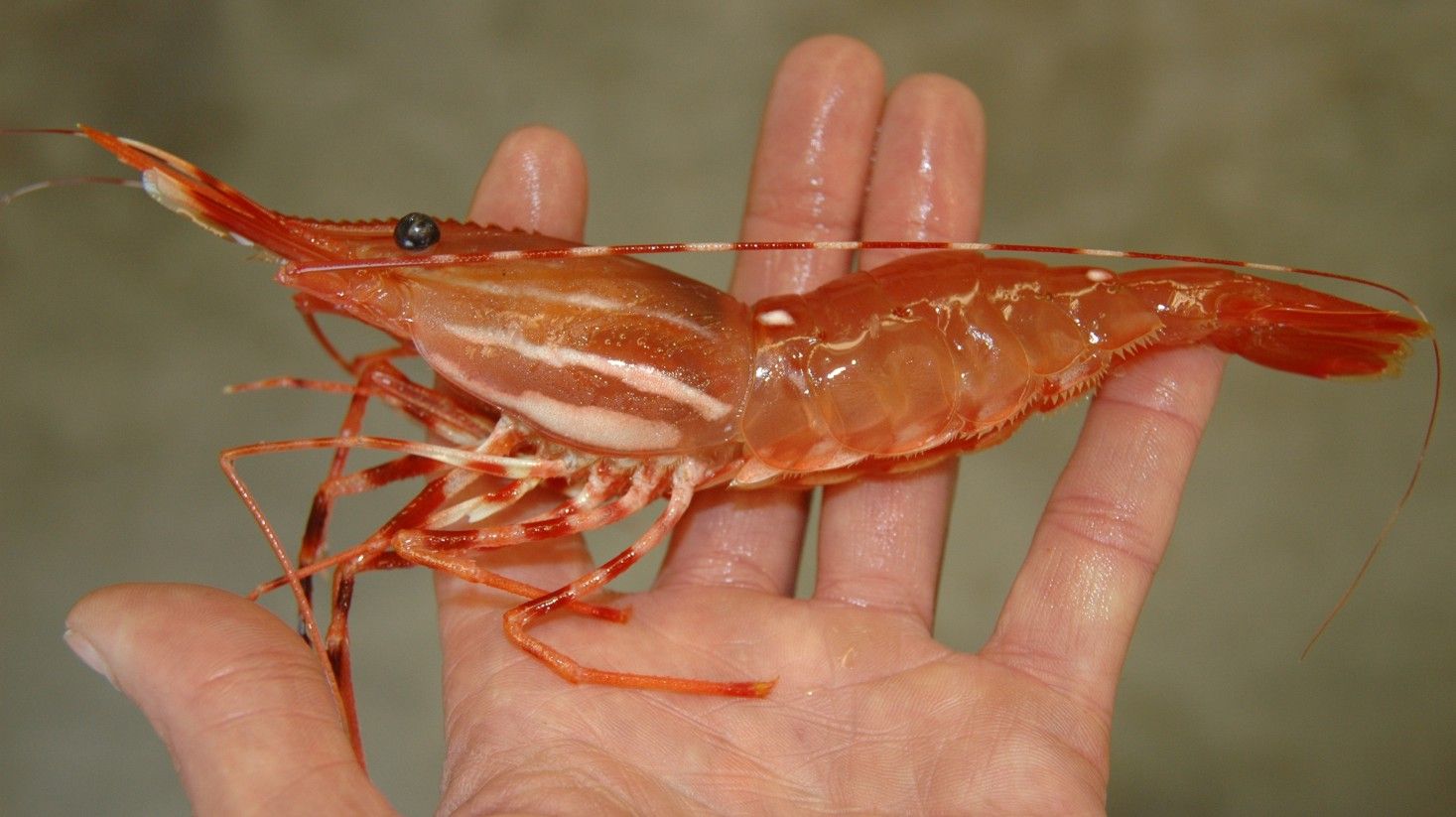
The Science
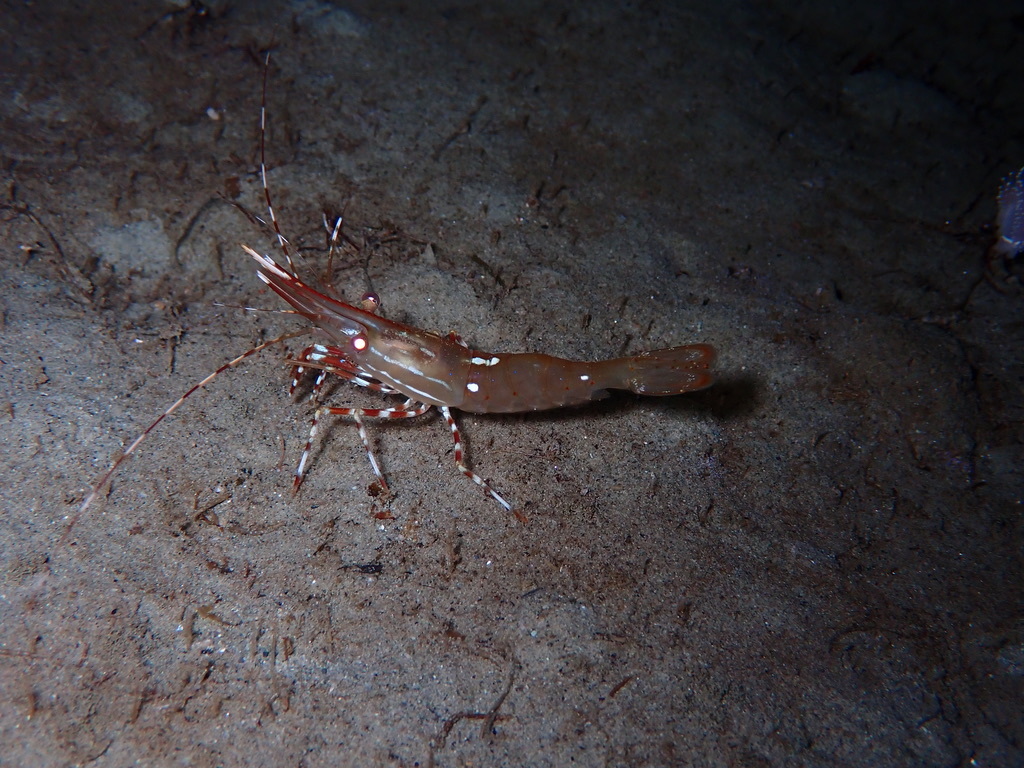
Taxonomic description
- Carapace is translucent red-orange with white stripes on the thorax, and distinctive white spots on sides of its first and fifth abdominal segments. [2]
- The walking legs (pereopods) and antennae are banded dark red & lighter red or white. [2]
- Has 5 pairs of swimming legs (pleopods), and 5 pairs of walking legs.
- The first pair of walking legs have claws, the second pair has a longer left leg than the right one. [2]
- Grows to 15-27cm in length with females generally larger than males. [2]
Distribution
- Found in the Northern Pacific from San Diego, CA to Unalaska Island, Alaska, and from the Sea of Japan to Korean Strait. [1,2]
Life history
- The maximum observed age is over 6 years old. [1]
- Aging and growth rate may be greater in temperate than colder areas. [1]
- This species is a protandrous hermaphrodite, so it is a male during the first 4-5 years of life and then changes to female. [1,2]
- Males can reproduce by the 3rd year and mate only once. [1]
- Females can mate 1-2 times. [1]
- Breeds in October after eggs are extruded on to female’s swimmerets; the female carries eggs for 4-5 months until hatching. [1]
- Eggs hatch over 10 days, the first 3-4 larval stages are planktonic, then settles.
Habitat
- Lives in rocky habitats along the seafloor from intertidal to deep cold water at depths greater than 400m (~1312 ft). [2,3]
- Undergoes nighttime vertical migration to shallower waters to find prey, then returns to deeper water at sunrise. [2]
- Feeds on worms, algae, mollusks, sponges, other shrimp, & scavenges dead, decaying organisms. [1,2]
The Fishery
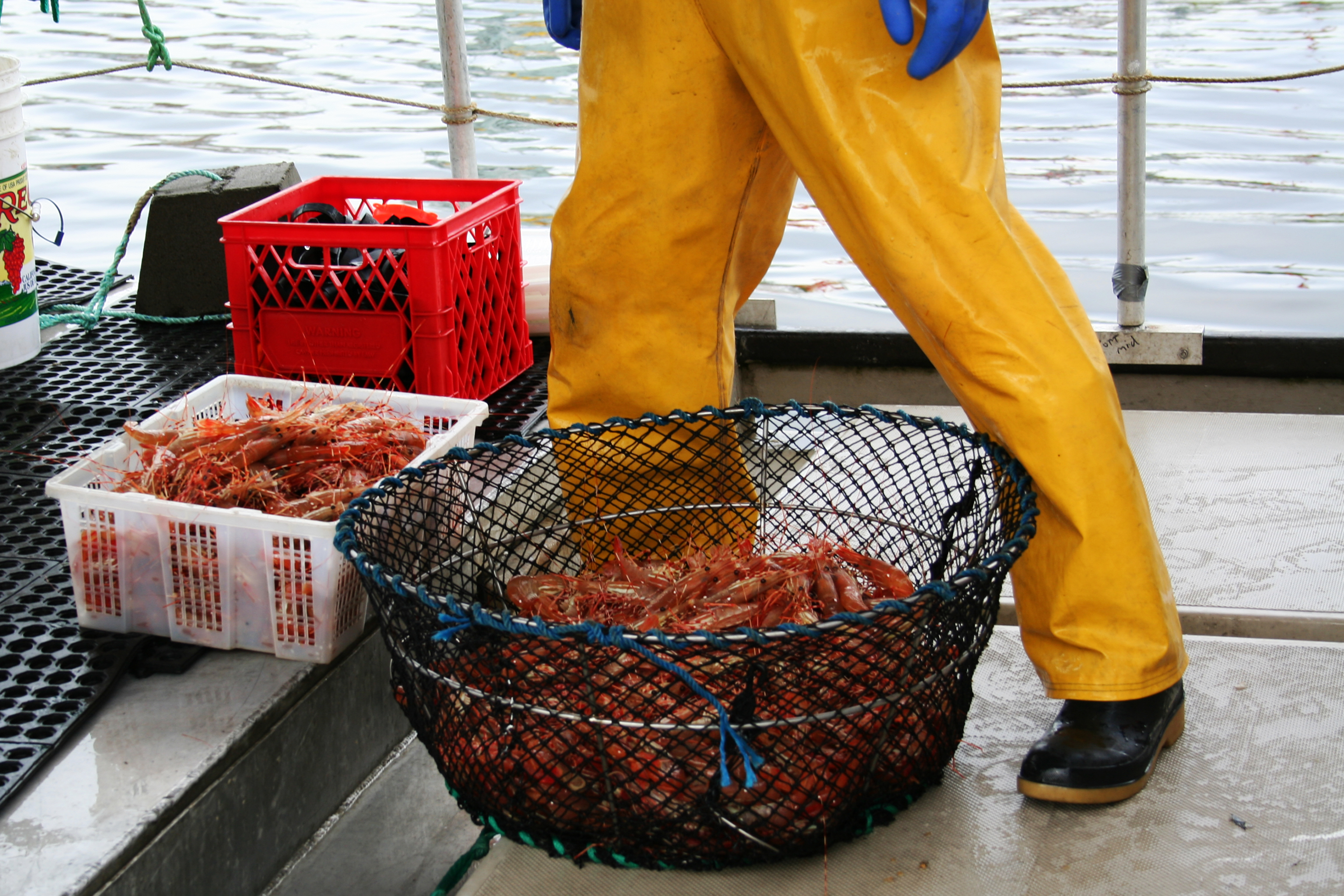
Seasonal availability
- Available from late February to September. [4,5]
Regulatory and managing authority
- As established by the Marine Life Management Act, the California Fish and Game Commission (CFGC) regulates the fishery, and the California Department of Fish and Wildlife (CDFW) manages this fishery in state waters. [1,9]
Gear type
- Trawl nets and oval or rectangular-shaped traps are used in this fishery. [3,4,5]
- Fishermen set strings with 10-50 traps onto the ground with anchors and buoys at one/both ends. [3]
- Traps are set at depths of 400-1,000 feet. [4]
Status of the fishery
- The fishery is managed sustainably and does not seem to be causing any negative environmental impacts. [3,4]
Potential ecosystem impacts
- There is little bycatch. [4,5]
- Spot prawn traps can possibly catch species of concern and disturb the bottom of the ocean, but bycatch is typically released without harm. [3]
The Seafood
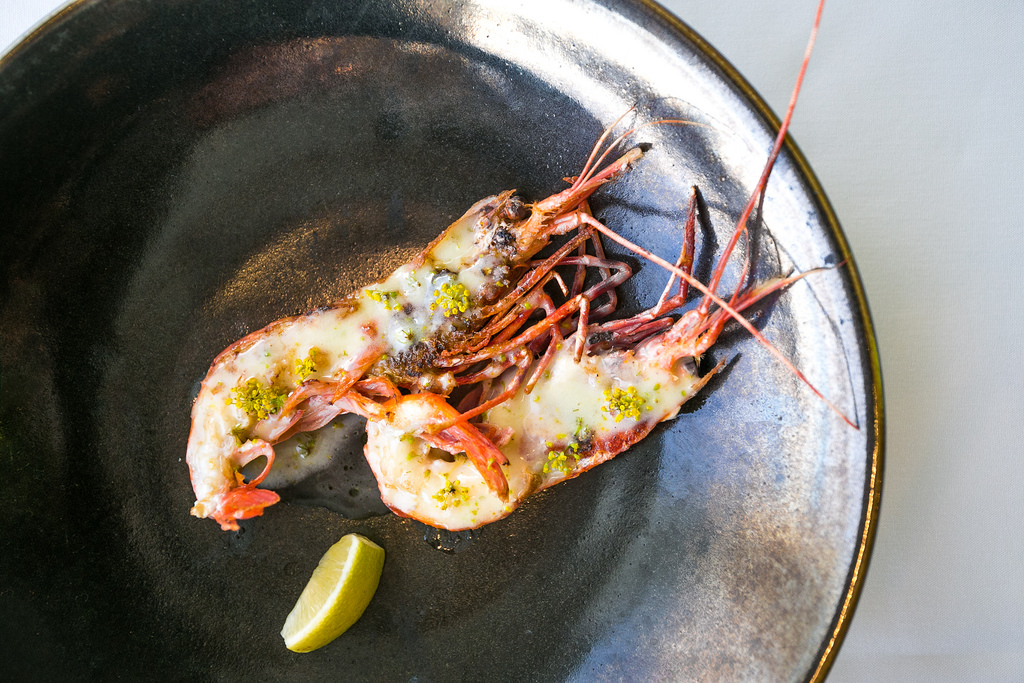
Edible portions
- Most of the demand is for the meat, but it’s possible to eat the shell, tail, and head. [7]
Description of meat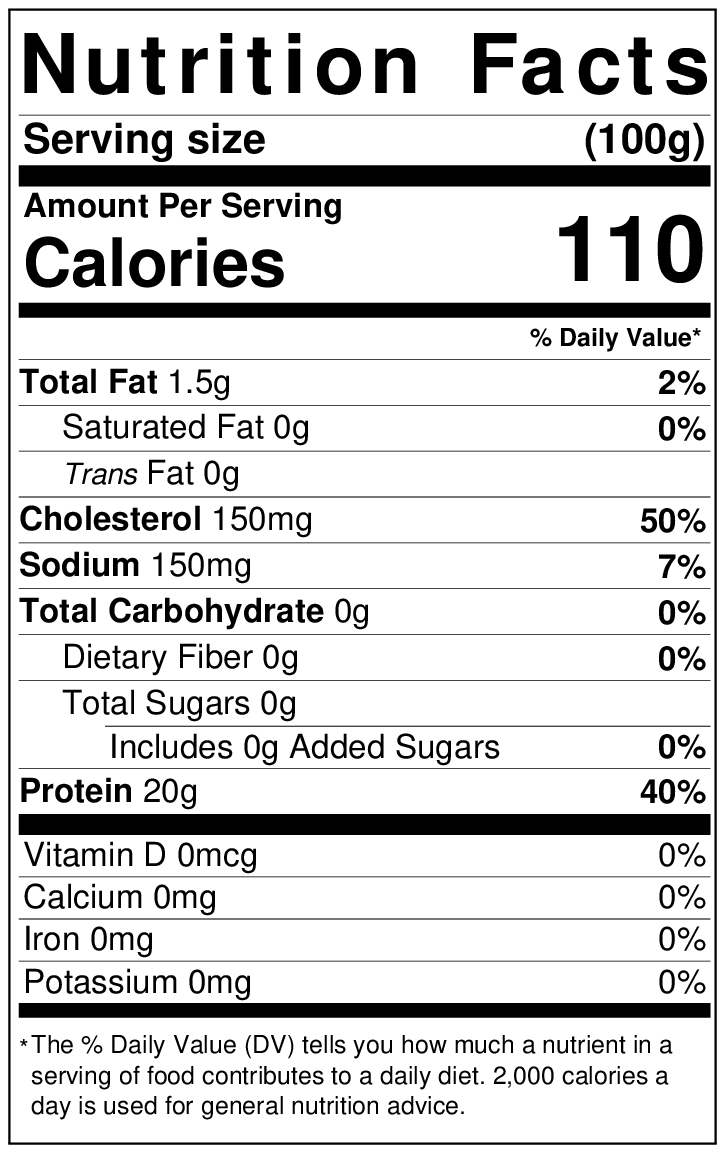
- Has a sweet, succulent flavor. [5]
Culinary uses
- Minimal preparation is recommended to let the naturally sweet and rich flavor to shine through. [5]
- It is popularly eaten raw, known as amaebi in sushi. [5]
- For some recipe suggestions, visit hunger-angler-gardener-cook or Van Isle Marina. [5,10]
Nutritional information
- See table for info. [8]
Toxicity report
- There are no known contaminants.
Seasonal availability
- Spring/Winter. [6]
References
[1] California Department of Fish and Wildlife. 2019. Spot Prawn, Pandalus platyceros, Enhanced Status Report. Web. https://marinespecies.wildlife.ca.gov/spot-prawn/. Accessed 15 Sept 2020.
[2] Aquarium of the Pacific. n.d. Spot Prawn. Web. http://www.aquariumofpacific.org/onlinelearningcenter/species/spot_prawn. Accessed 15 Sept 2020.
[3] NOAA Voices of the Bay. n.d. Spot Prawn. Web. http://sanctuaries.noaa.gov/education/voicesofthebay/pdfs/spotprawns.pdf. Accessed 15 Sept 2020.
[4] Spot Prawn, Pandalus platyceros. Status of the Fisheries Report 2006. California Dept. Fish & Wildlife. https://nrm.dfg.ca.gov/FileHandler.ashx?DocumentID=34419&inline. Accessed 15 Sept 2020.
[5] Shaw, H. Hunter Angler Gardener Cook. 2020. All Hail Spot Prawns! Web. https://honest-food.net/spot-prawns-recipe/. Accessed 3 February 2021.
[6] Shrimp, Spot Prawn California. http://www.seafoods.com/product/273-spot- prawn-california. Accessed 15 Sept 2020.
[7] Watson, M. 2020. The Spruce Eats. What Are Spot Prawns? Web. https://www.thespruceeats.com/what-are-spot-prawns-2217281. Accessed 15 Sept 2020.
[8] FishChoice. 2020. Spot Shrimp. Web. https://fishchoice.com/buying-guide/spot-shrimp. Accessed 15 Sept 2020.
[9] Marine Life Management Act. n.d. California Department of Fish and Wildlife. Web. https://wildlife.ca.gov/Conservation/Marine/MLMA. Accessed 24 August 2020.
[10] Van Isle Marina. n.d. Quick & Easy Spot Prawn Recipes. Web. https://vanislemarina.com/prawn-recipes/. Accessed 3 February 2021.
[11] Cowles, D. Invertebrates of the Salish Sea. n.d. Pandalus platyceros. Digital image. Web. https://inverts.wallawalla.edu/Arthropoda/Crustacea/Malacostraca/Eumalac.... Accessed 25 February 2021.
[12] R, K. iNaturalist. 2020. Digital image. Web. https://www.inaturalist.org/photos/103698288. Accessed 25 February 2021.
[13] Zeschky, J. flickr. 2009. bc spot prawns. Digital image. Web. https://flickr.com/photos/worldofjan/3605908435. Accessed 25 February 2021.
[14] City Foodsters. flickr. 2013. Course #5: Local Spot Prawn - Wild Fennel Butter. Digital image. Web. https://flickr.com/photos/cityfoodsters/10470810203. Accessed 25 February 2021.
